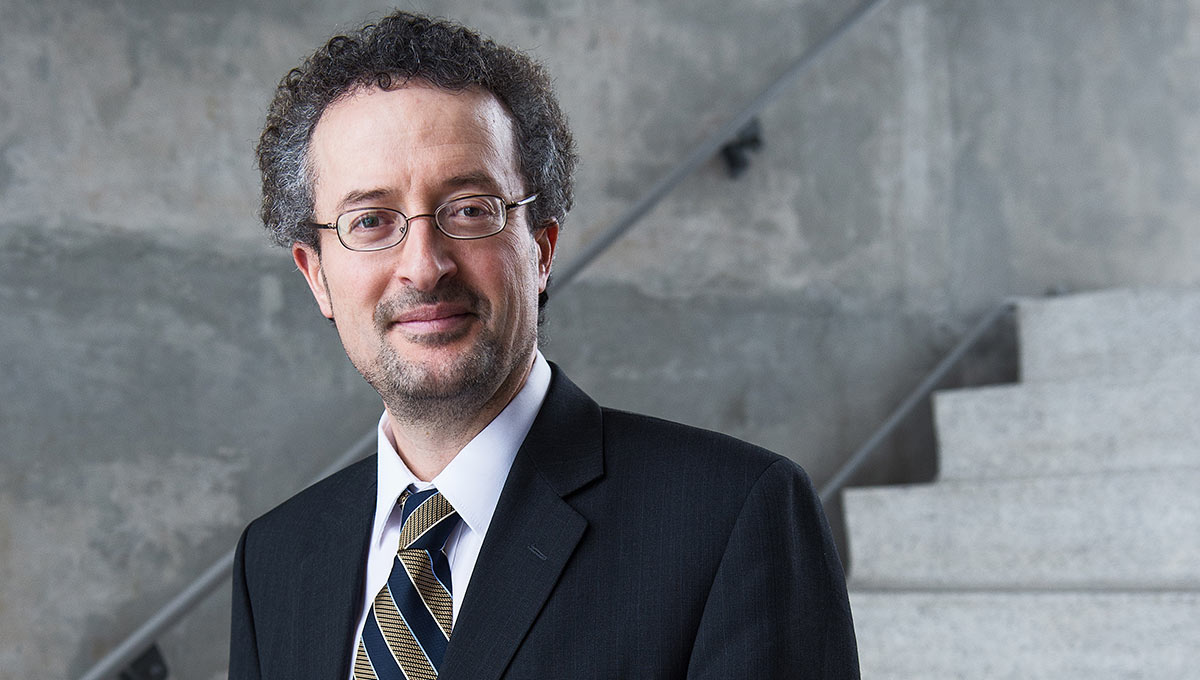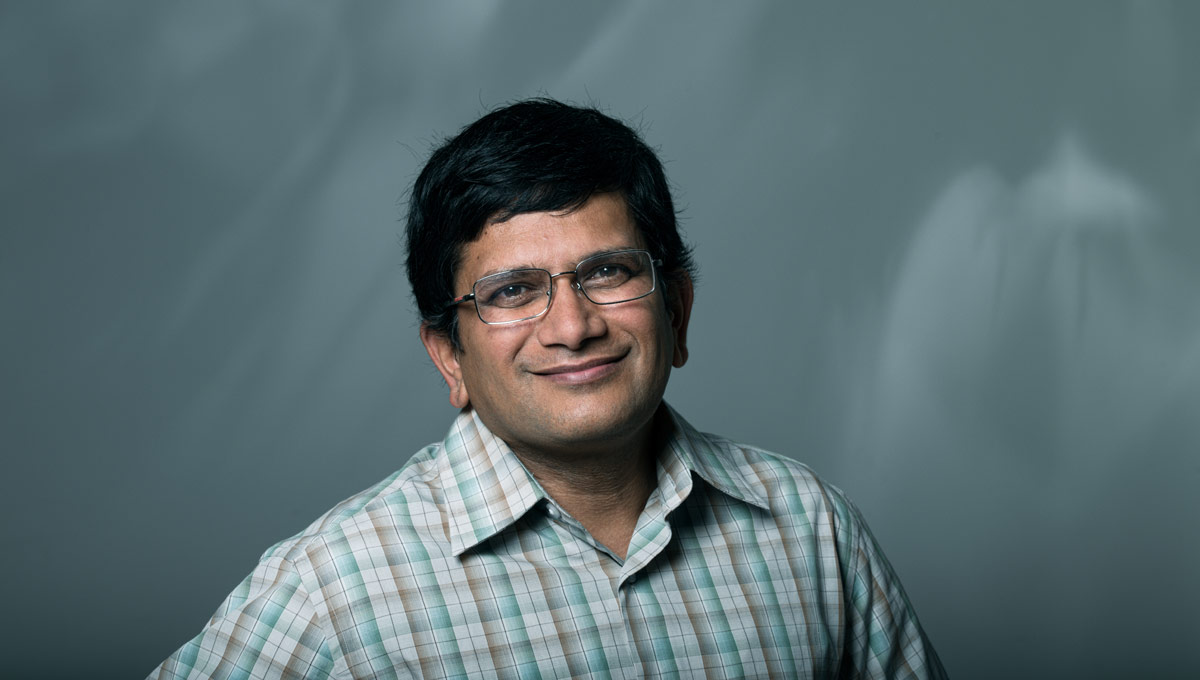By Adam Landry
Photos by Photos by Luther Caverly
The Internet of Things (IoT) — a term which describes physical devices, buildings and everyday items that connect to the Internet in order to integrate and communicate with one another — will transform our lives. Imagine a refrigerator that tells you when you’re running low on milk, or home security systems that can unlock a door from a mobile phone.
Prof. Mohamed Ibnkahla in Carleton University’s Department of Systems and Computer Engineering, as the university’s CISCO-funded Research Chair in Sensor Technology for the IoT, is working to develop sensor network technologies that will help facilitate the IoT’s deployment and upkeep.
With expertise in sensor integration, signal processing and wireless communications, and support from CISCO valued at $1.8 million over nine years, Ibnkahla’s research looks to apply the IoT in many areas, including smart grids, intelligent transportation systems, smart homes and cities, and even food traceability.
With such widespread potential for the IoT, Ibnkahla stresses the significance of supporting the backend infrastructure of networks that will be in high demand.
“We’re evolving to consume more and more data as a society,” he says.
“It’s important that there be dialogue between 5G, information systems and sensor networks in order to accommodate this increase in volume and to improve data processing and transmission.”

Sensor Networks as Gateways
With additional applications for industries such as health care, agriculture and energy, Ibnkahla believes that sensor networks will serve as a gateway to improved practices and future discovery.
“It’s a bit like using a telescope or microscope,” he explains.
“We can of course see the world around us with the naked eye, but these tools help to provide us with clarity and detailed information that we otherwise would have missed.”
Ibnkahla also believes that providing individuals with access to even basic information can serve as a powerful tool for change, enabling them to make informed decisions regarding issues such as energy and water consumption.
“Having access to real-time information will allow people to easily identify their usage levels and patterns,” he says. “We would certainly begin to see an adjustment in consumption behaviour as a result.”
According to Ibnkahla, outfitting homes with sensor technology could soon help families shift as much of their energy usage as possible to off-peak times, helping homeowners to reduce their utility costs while also decreasing the demand on our infrastructure and power grids. While it is simpler to incorporate these smart technologies into new construction projects, Ibnkahla explains that existing homes that are equipped with wireless technology are relatively easy to retrofit as well.
“The sensor nodes are very light and have become very inexpensive,” he says. “They can be integrated into even an old home quite easily.”
Whether we choose to make use of sensor networks to monitor our homes or enhance transportation, Ibnkahla emphasizes that the key to developing truly intelligent infrastructure lies in our ability to deploy systems that can be interfaced with emerging technologies and adapted for the future.
“Right now, we’re trying to build a platform that can host any technology in a seamless way,” he says. “Whether we are looking at smart buildings or smart health care, the true challenge will be to bridge all of these gaps and make it easy to manage a city through different technologies.”

Superior Data Collection
Prof. Sreeraman Rajan, Canada Research Chair in Sensor Systems (Tier II) and a professor in Carleton’s Department of Systems and Computer Engineering, also recognizes the overlaps that exist between communication networks, sensor data and the IoT. While Rajan understands that the physical sensors themselves lay at the heart of data collection, he believes their ability to communicate between both one another and the cloud is what makes them exceedingly valuable.
“Since almost all sensors are able to connect to Internet, it is possible to monitor and interact with them at all times from anywhere,” he says.
“That connectedness enables us to enhance the potential of sensor technologies, hopefully in ways that were never imagined before.”
Earlier this year, Rajan was awarded $150,000 in funding from the Canadian Foundation for Innovation to support his research in Carleton’s Advanced Sensor Signal Processing Laboratory.
By focusing on techniques such as standoff sensing, which can detect, identify and quantify anomalies and abnormalities, his research holds many applications within the fields of biomedical engineering and health monitoring, such as remote sensing of vital signs and continuous monitoring for patients with acute conditions, as well as detection of falls to help improve the welfare of seniors.
In addition to improving health care practices and efficiency, Rajan’s research in smart sensing includes promising applications for the IoT, connected homes and vehicles, and even security and defense, such as uninhabited aerial vehicle (UAV) detection and the ability to “see” through walls with radar imaging.

The Potential of Integrated Sensors
Having seen the potential of integrated sensor technology firsthand, Rajan believes these systems will continue to rely heavily upon high speed wireless networks, as the majority of the data they collect today is already being sent offsite for processing.
“When we expand our sensing capability by using multiple distributed sensors, it can require an enormous amount of processing power,” he explains.
“Sometimes sensors do not have the necessary capability to compute information on their own and require help in analyzing the data they’ve collected in order to react in the appropriate manner.”
With the volume of information being collected and transmitted set to increase dramatically in the near future, Rajan feels that security, privacy and data ownership will become ongoing challenges as smart infrastructure continues to evolve and integrate into our everyday lives.
“We need to be responsible in how we manage the data of individuals that fuels these interconnected systems,” he says. “Policy and regulation will ultimately need to be developed to ensure that we are not trading our privacy for the advantages offered by enhanced infrastructure.”
Rajan also understands that quantity doesn’t necessarily equate to quality when it comes to data collection, suggesting that we should be selective in what, when and how we monitor information.
“Being inundated with datasets that aren’t essential to the task at hand can actually be counter-productive,” he explains.
“To reduce the risk of information overload, we need to make sure we are collecting data intelligently and sensibly.”
Thursday, August 17, 2017 in 5G Wireless, Feature Stories, Internet of Things, Network Technology, Research, Software, Systems and Computer
Share: Twitter, Facebook



